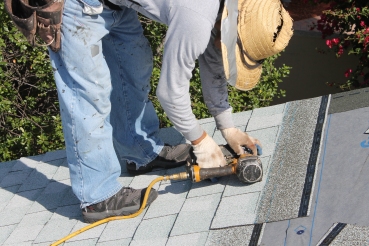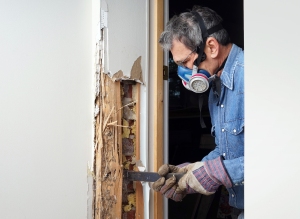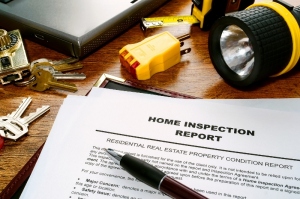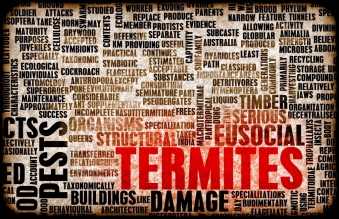 This is a question that comes up a lot as I guide my clients through the process of buying or selling a home. And, like most answers to many real estate questions, the answer is: “It Depends.” And, while it’s important to keep in mind that “everything is negotiable,” there are regional and customary practices of who pays for what during the course of the sale of a single family home, which is the segment of real estate market that this series will address.
This is a question that comes up a lot as I guide my clients through the process of buying or selling a home. And, like most answers to many real estate questions, the answer is: “It Depends.” And, while it’s important to keep in mind that “everything is negotiable,” there are regional and customary practices of who pays for what during the course of the sale of a single family home, which is the segment of real estate market that this series will address.
So, let’s put on our old pair of work jeans, roll up our sleeves and take a look at Real Estate Inspections, Due Diligence and Disclosure.
Let’s start with a discussion on potential strategies as a Buyer. Standard contract language states that “Buyer has 17 days after acceptance to complete all investigations, approve all disclosures, reports and other applicable information which Buyer receives from Seller….”
This time period can be negotiated, and in some cases, like an REO or Bank Owned Sale, the seller may require an even shorter inspection period. I have also led transactions where I negotiated longer inspection periods for out of town buyers to accommodate their schedules, but standard contract language is 17 days, which can be negotiated and can also affect negotiations. For now, let’s assume that we have an accepted offer, 17 days to perform our due diligence and because time is of the essence and the clock is ticking, we need to get moving.
Now that we have an accepted offer and take it to the agreed upon Escrow and Title Company we can submit the request for a Preliminary Title Report and Natural Hazards Disclosure Report. The Preliminary Title Report traces the history of the property ownership and searches for defects in the title, while the Natural Hazards Disclosure Report can alert you to hazards in that specific area and situations that might require further investigation.
In the case of a single family home sale the 2 most obvious and sometimes required physical inspections are the Wood Destroying Pest Inspection and the Home Inspection.
If the seller has not provided a Wood Destroying Pest Report, that is the first place I would start. In fact, I would recommend that you order it right away. The next inspection that you will want to coordinate is the Home Inspection, it costs around $500, and I recommend that you schedule it at a time when you can be present and engaged and take advantage of the opportunity to learn about the systems and condition of the home you are buying.
It is my professional opinion that you obtain these reports from licensed, reputable companies. If you have to pay for it yourself as a buyer, I think it is money well spent considering the size of the investment.
If the seller does provide any of these certified, professional reports as a course of disclosure, I recommend that you review them carefully, ask any pertinent questions about the report provider and, if necessary, seek a second opinion. I do believe that these costs should be borne by the buyer in most cases to insure that the buyer is getting the quality of inspection and due diligence they expect from the transaction. Remember to inspect what you expect!
There may be other inspections required on the property, especially if the home is on a well system or a septic system. Here is a quick list of some of the other inspections that you may want to consider depending on the property, the disclosures provided by the seller, and the circumstances surrounding the property. In our area it is customary for the seller to provide Septic Clearance (Approximately $700) and a Well & Pump Test (Approx $700) , but like anything else this can be negotiated or made to be part of the closing costs and negotiated into the final sale price. Other necessary inspections might include the following:
- Well and Pump Test (4 hr minimum)
- Water Quality Testing
- Septic Pump, Certification and Leach Field Test
- Sewer Line Inspection
- Percolation Test
- Roof Inspection
- Fireplace Specialist
- Pool & Spa Specialist
- Environmental Testing
- Radon Testing
- HVAC System
- Property Surveys
- Shared road agreements
- Arborists
- Appraisal
As a strategy for the Seller: – Standard contractual language states that “Seller has 7 days after acceptance to deliver to buyer all reports, disclosures and information for which Seller is responsible…” So when an offer is accepted, and because time is of the essence, you will want to be ready with necessary disclosures. In preparing the home for sale, the first thing I would do is clean and de-clutter the home as much as possible and then order a Wood Destroying Pest Inspection from a licensed, certified provider.
The cost for a modest family home Wood Destroying Pest Inspection is approximately $125 and often the first (and least expensive) place to start when looking for problems or repairs you can make before listing the home for sale. Most lenders are going to require a pest inspection so it is a wise move to find out what may come up in the negotiation and get ahead of it while you have options to do so. You will also be required to provide other statutory disclosures regarding the home within this time frame so it is best to be prepared as possible on the Seller end so as not to hold up the Buyer in performing their due diligence and inspections.
Most sellers don’t opt to do this, but you could hire a Professional, Certified Home Inspector yourself to come in and perform a thorough home inspection and point out any needed repairs, which could give you a clear picture of your true selling costs. The main point is that you get ahead of or be aware of any repairs, or what is known as “deferred maintenance,” so that it doesn’t come up as a surprise once you get an accepted offer on your home and then find out that the furnace needs to be replaced at a cost of $6,000 (example).
It could be worth the approximate costs of $500 to have a home inspector perform an inspection on your home and point out any red flags that he sees on things like switches, valves, doors, windows, hot water heaters and appliances like dishwashers and microwaves. I think that you will find that as you clean and prepare your home for sale, that you will know better than anyone the quirks of the systems of your home and what needs attention and repair. Then be prepared to fix it, or negotiate for it and whatever you do decide, you disclose it.
One final word to home sellers, and this is important: The most critical aspect of any of this, regardless of what you do or don’t do for inspections is disclose what you do know and what you find out. This is where most real estate transaction problems occur and I strongly advise the clients that I represent as sellers to disclose what they know about the home and for the buyers to do their homework on investigating as much as possible about the home.
The inspection period and process can be a stressful and challenging time but it is also your chance to really do your homework and understand what it is that you are buying or selling. Knowledge is power and the more knowledge that you have going into, and throughout the process, the better the decision you can make along the way.
 Appraisers have a challenging job; their primary responsibility is to determine, the best they can, what an appropriate value for a property is, at a given time, considering all the external circumstances that are, or were in play at that moment in time. In communities like Atascadero, Templeton and Paso Robles that can be a tough order to fill. However, there are standard methods and practices that all professional, licensed appraisers should abide by in order to accomplish the goal. The onslaught of rules, requirements and regulations have made it a tough gig in recent years, and the original scope of work is just as challenging as ever.
Appraisers have a challenging job; their primary responsibility is to determine, the best they can, what an appropriate value for a property is, at a given time, considering all the external circumstances that are, or were in play at that moment in time. In communities like Atascadero, Templeton and Paso Robles that can be a tough order to fill. However, there are standard methods and practices that all professional, licensed appraisers should abide by in order to accomplish the goal. The onslaught of rules, requirements and regulations have made it a tough gig in recent years, and the original scope of work is just as challenging as ever.





